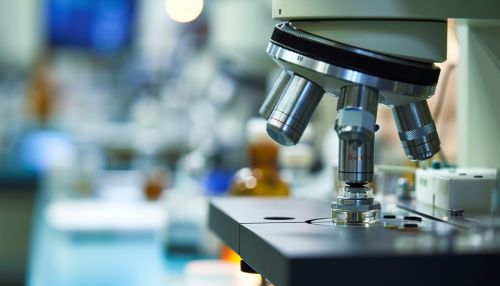Atomic emission spectroscopy
Introduction
Atomic emission spectroscopy (AES) is a method of chemical analysis that uses the intensity of light emitted from a flame, plasma, arc, or spark at a particular wavelength to determine the quantity of an element in a sample. The wavelength of the atomic spectral line gives the identity of the element while the intensity of the emitted light is proportional to the number of atoms of the element.


History
The history of atomic emission spectroscopy can be traced back to the 19th century. In 1859, Robert Wilhelm Bunsen and Gustav Robert Kirchhoff used the spectral lines emitted by atoms and ions to identify elements in samples. This marked the birth of atomic spectroscopy.
Principle
The principle of atomic emission spectroscopy involves the excitation of atoms by heating or applying a high energy. This excitation causes the electrons in the atom to move from a lower energy level to a higher energy level. When the atom returns to its ground state, it emits energy in the form of light. This light, when passed through a prism, gives a spectrum that is characteristic of the element.
Types of Atomic Emission Spectroscopy
There are several types of atomic emission spectroscopy, including flame emission spectroscopy, spark or arc emission spectroscopy, and inductively coupled plasma atomic emission spectroscopy.
Flame Emission Spectroscopy
Flame emission spectroscopy (FES) is a type of AES where the sample is atomized and excited by the heat of a flame. The atoms then emit light at characteristic wavelengths that can be detected and measured.
Spark or Arc Emission Spectroscopy
In spark or arc emission spectroscopy, the sample is subjected to an electric arc or spark and the light emitted is measured. This method is particularly useful for conducting analyses of metallic elements.
Inductively Coupled Plasma Atomic Emission Spectroscopy
Inductively coupled plasma atomic emission spectroscopy (ICP-AES) is a type of emission spectroscopy that uses inductively coupled plasma to produce excited atoms and ions that emit electromagnetic radiation at wavelengths characteristic of a particular element.
Applications
Atomic emission spectroscopy has a wide range of applications in various fields. In environmental analysis, it is used to detect and measure the levels of pollutants in air, water, and soil. In the pharmaceutical industry, AES is used for the analysis of trace metals in drugs and in the human body. In the field of geology, it is used to determine the composition of rocks and minerals.
Advantages and Limitations
The advantages of atomic emission spectroscopy include its high sensitivity and specificity, its ability to analyze multiple elements simultaneously, and its wide dynamic range. However, AES also has some limitations. These include the need for expensive equipment, the need for skilled operators, and the potential for spectral interference.
